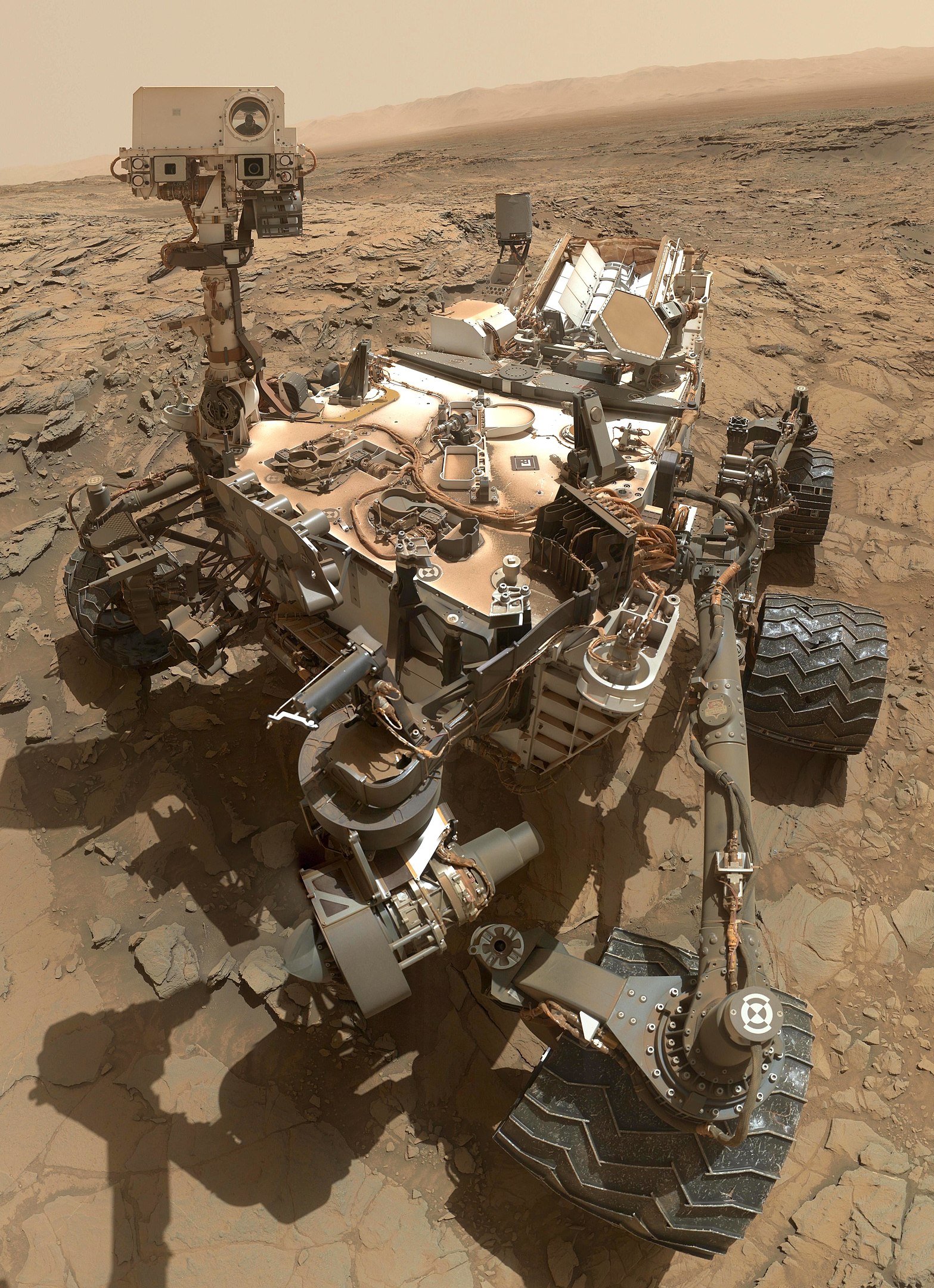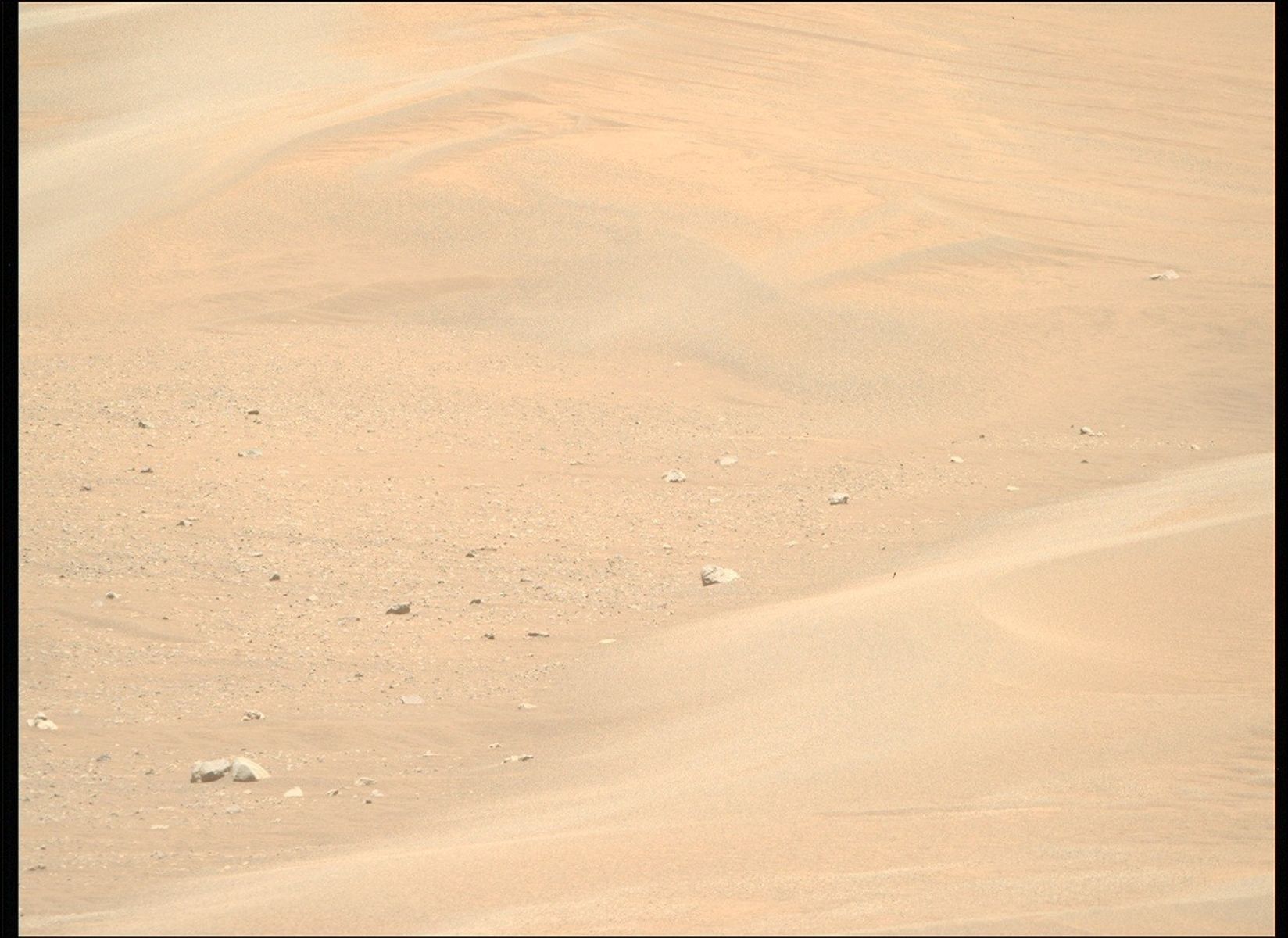NASA’s Perseverance rover has turned its attention to towering sand formations called megaripples at a site named Kerrlaguna on Mars. These windblown features, standing up to a metre tall, are providing new insights into how wind shapes the red planet today and could even help prepare for future human missions to Mars.
While Mars might seem like a frozen, static world, its landscape is actually being constantly reshaped by powerful winds. As NASA puts it, “On Mars, the past is written in stone, but the present is written in sand.” This poetic description captures exactly what Perseverance has been studying lately, massive sand formations that tell the story of modern Martian weather.
NASA’s Perseverance Mars rover took this selfie over a rock nicknamed “Rochette,” on September 10, 2021, the 198th Martian day, or sol of its mission (Credit : NASA/JPL Caltech)
After completing investigations at a geological contact zone called Westport, Perseverance attempted to climb steep slopes to reach a new rock exposure named Midtoya. However, the combination of treacherous terrain and rocky, unstable soil proved too challenging, forcing the rover team to retreat to smoother ground. The effort wasn’t wasted though since Perseverance managed to study fascinating spherule rich rocks that had tumbled down from above, including a distinctive helmet shaped rock dubbed “Horneflya” that captured public attention online.
The rover then moved to Kerrlaguna, where the steep slopes give way to a field of megaripples. These aren’t your typical beach type sand ripples, they’re massive windblown formations that can tower up to one meter high. While that might not sound enormous, imagine sand dunes the height of a tall person scattered across an alien landscape.
The science team decided these features deserved a detailed mini-campaign of study. Usually, Perseverance focuses on ancient rocks that preserve evidence of Mars’ distant past, but understanding the planet’s current environment is equally important. These megaripples offer a window into how wind and weather continue to shape Mars today.
 The Kerrlaguna feature on Mars is located in the Jezero Crater (Credit : NASA)
The Kerrlaguna feature on Mars is located in the Jezero Crater (Credit : NASA)
Nearly a decade ago, Perseverance’s predecessor, the Curiosity rover, studied an active sand dune in Gale crater and took a famous selfie there. However, the megaripples at Kerrlaguna appear inactive and dusty, representing a different type of Martian sand formation that’s common across the planet’s surface. These older, immobile features could reveal new insights about how wind and even trace amounts of water interact on modern Mars.
 This self-portrait of NASA’s Curiosity Mars rover shows the vehicle at the “Big Sky” site, where its drill collected the mission’s fifth sample of Mount Sharp (Credit : NASA)
This self-portrait of NASA’s Curiosity Mars rover shows the vehicle at the “Big Sky” site, where its drill collected the mission’s fifth sample of Mount Sharp (Credit : NASA)
During its investigation, Perseverance deployed multiple scientific instruments to thoroughly analyze the megaripples. Using SuperCam, Mastcam-Z, and MEDA instruments, the rover characterised the surrounding environment, measured the size and chemistry of individual sand grains, and looked for any salty crusts that might have developed over time.
This research serves a dual purpose beyond pure scientific curiosity. Understanding Martian soil composition and behaviour could prove crucial for future human missions to the red planet. Astronauts will likely need to use local Martian resources to help them survive, making detailed knowledge of soil properties and composition invaluable for mission planning.
The Kerrlaguna investigation also serves as preparation for a more ambitious study planned at Lac de Charmes, a location further along Perseverance’s route that features an even more extensive field of larger sand formations. By studying these windblown features grain by grain, Perseverance continues to unlock the secrets of how Mars behaves today, complementing its discoveries about the planet’s ancient past and helping pave the way for humanity’s eventual arrival on one of our nearest planetary neighbours.
Source : To see the world in a grain of sand: Investigating megaripples at Kerrlaguna on Mars
